 W
WAn almond present is a small present traditionally given in some Nordic countries to the person who gets the whole almond put in the rice pudding served for Christmas. It is a common Scandinavian tradition for many families, and especially for families with children.
 W
WAkyns or aqyns are improvising poets and singers in the Kazakh and Kyrgyz cultures. Akyns are different from the zhirau or manaschi, who are song performers or epic storytellers.
 W
WCastellers de Barcelona is a team of castellers from Barcelona founded in 1969.
 W
WCatherinettes was a traditional French label for women of twenty-five years old who were still unmarried by the Feast of Saint Catherine. A special celebration was offered to them on this day and everyone wished them a swift end to their single status.
 W
WA chapelle ardente is a chapel or room in which the corpse of a sovereign or other exalted personage lies in state pending the funeral service. The name is in allusion to the many candles which are lighted round the catafalque. This custom is first chronicled as occurring at the obsequies of Dagobert I (602–638).
 W
WChildlore is the folklore or folk culture of children and young people. It includes, for example, rhymes and games played in the school playground. The best known researchers of the field were Peter and Iona Opie.
 W
WCrying The Neck is a harvest festival tradition once common in counties of Devon and Cornwall in the United Kingdom in Europe. The tradition declined following the invention of machines such as the combine harvester.
 W
WDokter Faust van Waardenburg is a protagonist from a folk tale that is famous in the Netherlands. It is a Dutch version of the German Faust tale.
 W
WDonkey rides are a traditional feature of seaside resorts in the United Kingdom. Children are allowed to ride donkeys on a sandy beach for a fee in summer months while on holiday, normally led in groups at walking pace. Typically, the donkeys used to have their names on their harnesses so they could be identified by children and parents alike.
 W
WThe High table is a table for the use of fellows and their guests in large dining halls, where the students eat in the main space of the hall at the same time. They remain the norm at Oxford, Cambridge, Dublin and Durham universities, where the university is organized into colleges. Other academic institutions also have high tables.
 W
WSharaf and ird are Bedouin honor codes. Along with hospitality and courage/bravery, it is one of the Bedouin aspects of ethics. Bedouin systems of justice are based on these honor codes, although the codes are falling into disuse as more Bedouins accept sharia or national penal codes as the means for dispensing justice.
 W
WIvy Day is an annual ceremony in which an ivy stone is placed on either a residential, academic or administrative building or ground to commemorate academic excellence. The ceremony is most known for being practiced among older colleges in the Northeastern United States. It is most associated with the Ivy League and a group of small liberal arts college known as the Little Ivies. Some institutions announce members of Phi Beta Kappa and specialized honor designations for students. Some classes donate to the college, in the form gates, facades, and door outlines, by inscribing or creating their own version of symbolic icons of the college's seal or other prominent insignia. The ivy stones are usually decorated with the graduation date and a symbol that represents the college as a whole or the class as a whole. The most common ivy stone is one-by-two feet and is usually made out of workable stone.
 W
WKalyady Tsars is a ritual and festive event celebrated in Siemiežava village, Minsk Region, Belarus. In 2009, it was inscribed on the UNESCO List of Intangible Cultural Heritage in Need of Urgent Safeguarding.
 W
WA keepsake box or memory box, typically made from wood, is used for storing mementos of a special time, event or person. They are often created or purchased to mark life's major events like a christening, wedding, birthday, or First Holy Communion. They may also be given for sad occasions of bereavement, such as the stillbirth of a child, when a keepsake/memory box helps with the grieving process. This sort of a keepsake box may be personalised with a person's name, design or picture.
 W
WKkokdugaksi Noreum is a type of traditional puppet play from Korea. It was developed in 18th century Joseon Dynasty era by Namsadang troupe which is a group of traveler artists. Namsadang traveled all over Korea and entertained the commoners.
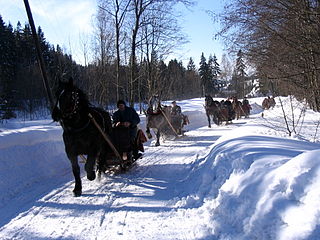 W
WKulig is an old Polish winter tradition dating back to the days of the szlachta (nobility).
 W
WKussie is a Japanese lake monster said to be living in Hokkaidō's Lake Kussharo. The naming convention was likely borrowed from that of Loch Ness's Nessie.
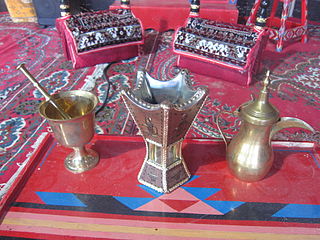 W
WA mabkhara is a censer found across the Arab World and Turkey. The mabkhara was traditionally made from clay or soft stone. Most mabkharas have a square pedestal base with inward sloping sides which support a square cup with outward sloping sides. The wooden base is often carved out to form legs. The cup itself is lined with sheet metal. Older burners were decorated with patterned combinations of soft metal pegs and brass tacks, often with mirrors in the panels of the upper part. The legs were ordinarily covered with sheet metal.
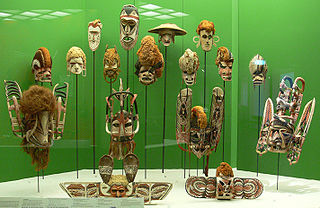 W
WMalagan ceremonies are large, intricate traditional cultural events that take place in parts of New Ireland province in Papua New Guinea. The word malagan refers to wooden carvings prepared for ceremonies and to an entire system of traditional culture.
 W
WParintins Folklore Festival is a popular annual celebration held in the Brazilian city of Parintins, Amazonas. It is one of the largest the annual festival in Brazil; only the Carnival festivities in Rio de Janeiro and Salvador draw more participants. The festival is recognized as a Cultural Heritage of Brazil by the National Institute of Historic and Artistic Heritage.
 W
WTo make a pinky promise, or pinky swear, is a traditional gesture most commonly practiced amongst children involving the locking of the pinkies of two people to signify that a promise has been made. The gesture is taken to signify that the person can break the finger of the one who broke the promise. The tradition appears to be a relatively modern invention, possibly as a continuation of older finger traditions.
 W
WPoy sang long is a rite of passage ceremony among the Shan peoples, in Myanmar and in neighbouring northern Thailand, undergone by boys at some point between seven and fourteen years of age. It consists of taking novice monastic vows and participating in monastery life for a period of time that can vary from a week to many months or more. Usually, a large group of boys are ordained as sāmaṇera at the same time.
 W
WPozo de Jacinto is a pit cave located at Jobos Beach in the northwestern side Puerto Rican municipality of Isabela on Puerto Rico Highway 466.
 W
WPropose Day is celebrated in India on 8 February as a day to propose to your significant other, a large numbers of young people give roses to propose to their prospective girlfriend or boyfriend. It is second day in Valentines Week. Although Valentine's day is celebrated across whole world, Valentines week is something celebrated in India only. This week marks various festivities across India.
 W
WA stirrup cup is a "parting cup" given to guests, especially when they are leaving and have their feet in the stirrups. It is also the traditional drink served at the meet, prior to a traditional foxhunt. The term can describe the cup that such a drink is served in.
 W
WT'nalak, is a weaving tradition of the T'boli people of South Cotabato, Philippines. T'nalak cloth are woven from abacá fibers. The traditional female weavers are known as dream weavers, because the pattern of the t'nalak cloth are inspired by their dreams.
 W
WTaper burn marks are deep flame shaped scorch marks often found on the timber beams of early modern houses. They were originally thought to have been accidental, but research suggests that most marks may have been made deliberately, as there is clear patterning of the activity. They are theorised to have been made as part of a folk superstition, then thought to protect the building from fire and lightning.
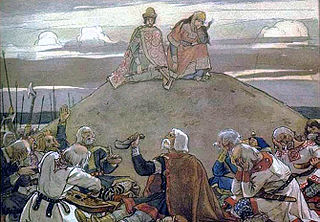 W
WTrizna was a funeral feast of ancient Slavic religion, which was conducted for distinguished members of society before their cremation. Besides the feast and the wake, the deceased will have their body washed and dressed in the finest clothes before their cremation, and merry-making and contests were also held. According to tradition, this was done to symbolise the victory of life over death by repelling evil spirits with laughter.
 W
WTukkilaiskisat (Tukkilaiset) is a traditional timber rafting competition in Finland. Originally tukkilaiset referred to log drivers.
 W
WUmemulo is a traditional Zulu coming of age ceremony for women. This ritual is usually done for females at the age of 21, but this varies and depends on circumstances. The rituals involve slaughtering a cow and the traditional Zulu dance Ukusina involving a spear and guests gifting the young female with money and there blessings. A woman's Umemulo ceremony signifies that she is now ready for marriage.The Girl is supposed to stay 7 Days in the Rondovel with her friends and practising Songs for the Ceremony. And on the 7th day the girls wake up early in the morning to the Nearest River to bath, when they come back the Mothers do the Virginity testing to prove that the Girl is a virgin and she wears the cows inside ( Umhlwehlwe) and they sing the Traditional songs and dance and people bring presents and money and that money will help a family a lot.
 W
WWeaver's day – holiday that was inaugurated in Poland in 2008 by Urszula Wolska. The holiday is celebrated at first Saturday of October. This month was pickup, as the day of celebration, because polish name of October, Październik, came from the word paździerze.
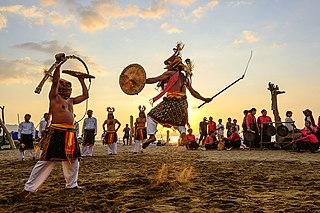 W
WWhip fighting can be done as a ritual, a show, or a sport, the latter also known as whip boxing.
 W
WZambil Frosh is the most important work of Kurdish writer and poet Faqi Tayran. Zambil Frosh is based on a true story, transmitted from generation to generation through oral tradition. Zambil Frosh is considered Kurdish folklore.